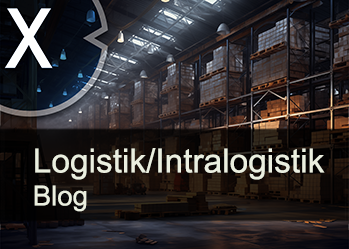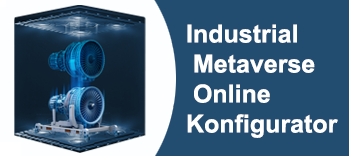PPP-Loghubs-a new type of logistics center: the public-private logistics hub-from the truck to the rail and back
Xpert pre-release
Language selection 📢
Published on: July 16, 2025 / update from: July 16, 2025 - Author: Konrad Wolfenstein

PPP-Loghubs-a new type of logistics center: the public-private logistics hub-from the truck to the rail and back-Image: Xpert.digital
State and private sector hand in hand: The simple secret behind the most modern logistics hubs in Europe
Billion dollar investments for the future: why huge logistics hobs are now being created everywhere
Our modern supply chains are the backbone of the global economy, but they are also susceptible and are under enormous pressure. Cutlets on the motorways, delivery bottlenecks and the urgent need to reduce CO₂ emissions in freight traffic are demanding new, intelligent solutions. This is exactly where a concept comes in to change the logistics landscape: the public-private logistics hub, also known as the PPP loghub.
But what is behind this term? A PPP loghub is much more than just a huge warehouse. It is a strategic nerve center of logistics in which the power and planning security of the state merge with the operational efficiency and innovative strength of the private sector. At these multimodal nodes, the street, rail and waterway are seamlessly linked to bundle, accelerate and make more environmentally friendly. Here, goods are not only handled and stored, but also refined, decorated and intelligently controlled.
The vision behind these centers is as ambitious as it is necessary: they are intended to strengthen the competitiveness of entire economies as the engine serve for the traffic transition, bring structurally weak regions to bring new jobs and increase the security of supply in times of crisis. The clever distribution of investments, tasks and risks between the public sector and the company creates an infrastructure that none of the partners could realize in this speed and quality solely.
This text examines how this model of success works: from the detailed division of tasks and the forms of contract to the concrete services of a modern hub to international practical examples. It shows the enormous advantages, but also does not hide the challenges and risks associated with such complex projects. Immerse yourself in the world of PPP logs-the decisive puzzle ropes for the supply chains of the future.
1. What exactly is a public-private logistics hub, a so-called PPP loghub?
A public-private logistics hub (short: PPP-Loghub) is a strategically located, multimodal logistics location that serves as a hub for freight traffic. What is special about this model is the organizational form: it is a public-private partnership (PPP), i.e. a formal, contractually regulated cooperation between the public sector (state, state, municipality) and one or more companies from the private sector.
In such a hub, a wide variety of logistical services are bundled and offered from a single source. This includes:
Goods handling: The reloading of goods between different transport companies (e.g. from the truck to the rail).
Storage: Short to long-term storage of goods, often in specialized warehouses (e.g. for cooling goods or dangerous goods).
Distribution: The fine distribution of goods into a region or the consolidation of shipments for further transport.
Additional services (Value Added Services): Refinement and support services such as packaging, labeling, quality control, repairs or return management.
The core target of a PPP loghub is to create a highly efficient, modern and competitive logistics hub through the bundling of infrastructure, capital and know-how of both partners-the state and the private sector-which strengthens the entire supply chain of a region or a country.
2. Why is the term “multimodal” so crucial in this context?
The term "multimodal" is the heart of a modern logistics hub and a central reason for its strategic importance. Multimodality means that the location is designed in such a way that it seamlessly linked at least two, ideally three or more different modes of transport. Typical combinations are:
Street - rail: This is the classic combination to shift long -distance transports from the overloaded road to the more environmentally friendly rail.
Street - rail - inland ship: This trimodal connection is particularly powerful and ecologically advantageous, since inland ships can transport large amounts very inexpensively. Such hubs typically lie on large rivers or channels.
Connection to sea or airports: Many log hubs act as "dry ports" (dry ports) in the hinterland. They relieve the seaports by relocating customs handling and the consolidation of containers inland. An proximity to a freight airport enables integration into global express supply chains.
The multimodality is crucial because it brings flexibility, efficiency and resilience into the supply chains. If a mode of transport fails (e.g. by strike, flood or a road closure), one can be avoided. It also enables the transport costs and the CO₂ balance to be optimized by choosing the most suitable mode of transport for each section (e.g. the train for the long-distance route and the truck for the "last mile" to the end customer).
3. What is the overarching purpose or the vision behind the construction of PPP loghubs?
The vision behind PPP loghubs goes far beyond the pure provision of logistics areas. It is an instrument of national and regional economic, infrastructure and climate policy. The overarching goals are:
Strengthening national competitiveness: A country with a network of modern logistics hubs is a more attractive production and commercial location. It lowers the logistics costs for domestic industry and accelerates import and export processes.
Modernization of the infrastructure: Many countries fight with outdated infrastructure and limited budgetary funds. The PPP model enables the fast construction of state-of-the-art systems without burdening the state budget alone.
Promotion of sustainability: Due to the targeted promotion of rail and waterway traffic, log hub actively contributes to the relocation of traffic and thus to reduce greenhouse gas emissions and street jams.
Regional development: Log hubs are often anchor projects for structurally weak regions. They create a large number of jobs and crank the local economy directly (in the company) and indirectly (for suppliers and service providers).
Increasing the resilience of supply chains: The Covid 19 pandemic and geopolitical crises have shown how fragile global supply chains can be. Central, well -networked hubs with storage capacities help to build buffers and increase the security of supply.
Ultimately, a PPP-Loghub is a strategic puzzle part that makes logistics from a pure cost factor an active value added driver for an economy.
4. How exactly are the tasks between the public and the private partner divided? How can you explain this from the core elements?
The division of tasks is the core of the PPP model and follows the principle: Each partner takes on the tasks that he can best. This can be broken down in detail using the three central building blocks:
a) Investment in the basic infrastructure
Public partner: The state or the municipality typically brings the "immovable" and sovereign assets. This includes:
Plot: The provision of suitable, often large areas is a classic public task. For this purpose, the state can fall back on its own areas or secure areas through instruments such as expropriation (in the public interest) and spatial planning planning.
External connection: the construction or expansion of access roads, motorway connections, bridges and the guarantee of rail and waterway connections falls within the area of responsibility of public infrastructure planning. These investments not only use the hub, but the entire region.
Private partner: The logistics company or consortium invests in the "operational" infrastructure, i.e. everything that is necessary for daily operation. These include:
Suprastructure: the construction of warehouses, cold stores, office buildings and workshops.
Terminal technology: The purchase of cranes (e.g. portal cranes for container handling), forklifts, conveyor belts and other envelope technology.
IT systems: The implementation of complex software for warehouse and yard management (control of vehicles on the site), tracking systems and the connection to customs and customer systems.
b) Operation & Maintenance
Public partner: The state retains its sovereign and regulatory tasks. He acts as a supervisory authority and ensures that legal standards are observed. This includes:
Regulatory framework: enactment of operating permits and monitoring compliance.
Supervision: Presence of customs authorities (for handling), security organs (e.g. police or work protection with public powers) and environmental offices (monitoring of noise and emission protection requirements).
Private partner: The private operator is responsible for the entire day-to-day business and brings his operational know-how. His tasks are:
Operative management: planning and implementation of the envelope, storage and value-added services.
Maintenance: maintenance and repair of the buildings, technology and IT systems to ensure smooth and safe operation.
Marketing and sales: Acquisition of customers and marketing the hub's services.
c) Risk and profit distribution
Public partner: The state benefits indirectly and secures the project in the long term.
Planning security: With a long-term contract (often 20-50 years), the state creates stable framework conditions for the operator and ensures the logistical supply of the region for decades.
Indirect income: tax revenue (commercial, income tax), reduced social spending by new jobs and the general strengthening of the regional economy.
Private partner: The private partner bears the entrepreneurial risk and is directly involved in success.
Records: He generates sales from usage fees (e.g. per container or pallet stored) and the services sold.
Company risk: He bears the risk of fluctuating demand, increasing operating costs or technical failures.
5. What is the "common benefit" that arises from this partnership and which none of the partners could achieve alone?
The common benefit, often referred to as a synergy effect, is the decisive advantage of the PPP model. None of the partners could achieve this result isolated:
Higher equipment standard with shared load: The state would have to raise enormous sums out of the household for a state -of -the -art system, which is often not feasible politically or financially. The private partner could hardly finance the expensive basic infrastructure (country, rail connection) alone. Together they realize a top standard that nobody could afford alone. The state receives modern infrastructure without full budget pollution, the private sector receives an ideal operating basis.
Efficiency through specialization: The state focuses on its core competencies (planning, regulation, approval), while the private sector fully plays its strength - the efficient, customer -oriented and innovative operation. This know-how transfer from private to the public sector (and vice versa in planning issues) leads to more professional and cheaper business than with a purely state solution.
Accelerated infrastructure structure: state construction projects are often lengthy and dependent on political cycles. By integrating a private partner who has a strong economic interest in quick completion, such major projects can be realized much faster. This enables a country to quickly expand its national logistics capacities and to react to global market requirements.
Optimized risk distribution: In the case of a purely state project, taxpayer bears all risks (construction costs, low capacity utilization). In the PPP model, the risks are assigned to the partner who can best control them. The risk of building and the operating risk often lies with the private partner, while the political or regulatory risk remains with the state. This intelligent distribution makes the overall project more robust.
6. Which specific functions and services are typically offered in such a hub?
The functional spectrum of a modern PPP loghub is modular and aims to create a comprehensive "one-stop shop" experience for logistics customers. The five core areas are:
a) Multimodal envelope
This is the basic function. It includes the physical infrastructure and the processes to reload goods between the transport companies. Specific systems for this are container terminals with portal cranes, envelope tracks for all-rounds, roro ramps (roll-on/roll-off) for trucks and trailers as well as investors for inland ships.
b) consolidated warehouse and customs clearance
This area simplifies the administrative processes enormously.
Storage: Offer of different types of storage, e.g. high -bay warehouse for pallets, block bearings for bulky goods, cooling stores for food or pharmaceuticals (adherence to the cold chain) and hazardous substance warehouse.
Customs clearance: These hubs often have the status of a free zone or an open customs warehouse. This means that imported goods can be stored here, edited and re -packed without immediately incurring customs and import sales tax. These are only due when the goods leave the hub towards the domestic market. This significantly improves the liquidity of companies. The "one-stop shop" principle means that customs officials are directly on site and that all formalities can be completed centrally.
c) Value Added Services (VAS)
The actual added value takes place here, which goes beyond pure transport and storage. Examples are:
Settlement: compiling goods into new sales units (e.g. gift baskets).
Packaging & labeling: Concuting goods for the local market, attaching price signs or country -specific labels.
Quality control: random or complete testing of incoming goods.
Repair & return management: Establishment of small workshops for repairing products (e.g. electronics) and the efficient processing of customer returns, which is an important part of e-commerce.
d) digital control
A modern hub is unthinkable without a powerful IT infrastructure.
Yard management system (YMS): A software that controls all traffic on the premises (trucks, containers, alternating bridges) in real time, assigns parking spaces and minimizes waiting times.
RFID/IOT: Use of sparktomettes (RFID) and the Internet of Things (IoT) to automatically identify goods and charge carriers and to monitor their condition (e.g. temperature, shock).
Tracking & tracing: Complete tracking of programs across all process steps that can be viewed transparently for the customer. This creates transparency and planning security.
e) sustainability modules
In view of climate change, this aspect is becoming increasingly important and is often a core argument for public funding.
Train connection: The direct track connection is the most important module for CO₂ reduction.
Photovoltaic systems: Installation of solar modules on the huge roofs of the warehouses to cover your own electricity requirements or even to feed electricity into the network.
Alternative drives: Provision of charging infrastructure for electric trucks or petrol stations for hydrogen or organic LNG for the truck fleet.
Energy efficiency: construction of the buildings according to high energetic standards (insulation, LED lighting) and intelligent energy management systems.
7. Which contract models are typically used for PPP loghubs?
Answer: The choice of the contract model depends on the specific risk of risk of the partners, the maturity level of the infrastructure and the legal framework of the country. The three most common forms are:
Bot / BTO (Build Operate Transfer / Build Transfer Operats)
Description: This is one of the most comprehensive models. A private consortium receives the concession to plan, finance and build the log hub on a property provided by the state (build). Subsequently, (operates) the hub operates for a long period of time, typically 20 to 30 years, to refinance and achieve its investment through the operating income and achieve profits. After the concession period has expired, the entire facility will be transferred to the state (transfer). With the BTO model, ownership is transmitted immediately after completion, but the private partner continues to operate it for the agreed term.
Application: Ideal for Greenfield projects in which a completely new infrastructure is created and the state wants to completely move the construction and financing risk to the private sector.
Concession/lease (concession/lease model)
Description: In this model, the state has already built or acquired the basic infrastructure (e.g. the terminal and the track systems) itself. He then awards a license to a private operator. This leases (lease) the finished system for a certain period of time and is responsible for the entire operation, maintenance and often also for smaller modernization investments. In return, he pays a regular lease or concession fee to the state.
Application: Suitable for Brownfield projects (modernization of existing systems) or if the state wants to keep strategic control over the infrastructure and only want to outsource operational operation. The risk to the private partner is less because there are no large construction costs.
Joint venture (joint venture)
Description: Here the public and private partners found a common project company (holding). Both bring capital or real assets (e.g. the state the property, private know-how and cash capital) into this company. The shares can be distributed differently (e.g. 51% state, 49% privately to secure public control). This common society is then the owner and operator of the hub. Profits and losses are shared according to the capital shares or an agreed key.
Application: This model is chosen if both partners strive for a very close, partnership -based cooperation and are willing to permanently carry both risks and opportunities together. It requires a high degree of trust and a complex governance structure.
🎯🎯🎯 Benefit from Xpert.Digital's extensive, fivefold expertise in a comprehensive service package | R&D, XR, PR & SEM

AI & XR 3D Rendering Machine: Fivefold expertise from Xpert.Digital in a comprehensive service package, R&D XR, PR & SEM - Image: Xpert.Digital
Xpert.Digital has in-depth knowledge of various industries. This allows us to develop tailor-made strategies that are tailored precisely to the requirements and challenges of your specific market segment. By continually analyzing market trends and following industry developments, we can act with foresight and offer innovative solutions. Through the combination of experience and knowledge, we generate added value and give our customers a decisive competitive advantage.
More about it here:
Resilient supply networks: The strategy behind innovative logistics nodes
8. Are there specific examples of PPP logs?
Answer: Yes, the PPP model is used worldwide to develop logistics infrastructure, often with regionally different focuses. Here are some concise examples:
Gulu Logistics Hub, Uganda
Brief description: This is a prime example of a development project. A multimodal hub is created on an area of 27 hectares, which connects the street with the reactivated Tororo Gulu railway line. The aim is to promote trade for Norduganda and the neighboring countries South Sudan and DR Congo.
PPP structure: The financing of the basic infrastructure is a mixture of own funds from the Ugandian government and grants (grants) of international partners such as the European Union and the British development cooperation (DFID). A license was awarded to a private consortium for the company that brings the operational expertise. The project is currently (state of the template) in the construction phase and shows how PPPs also contribute to infrastructure development in emerging countries.
Indian Multi-Modal Logistics Parks (MMLP)
Brief description: This is not an individual project, but an ambitious national program of the Indian government. The goal is to build 35 state -of -the -art MMLPs along the country's most important economic corridors. These parks should reduce the extremely high logistics costs in India, increase efficiency and reduce environmental pollution.
PPP structure: The model is clearly standardized. The Indian Confederation (via a state agency) provides the country and the external connections (rail, street). A 30-year concession is then awarded to a private developer and operator in a bidding process. This is responsible for the construction of the super structure (halls, technology) and the entire company. The first locations, such as that in Jogighopa (Assam), are already under construction or in operation.
Logistics Initiative Hamburg, Germany
Brief description: This example is less a single hub than a PPP cluster model. The Free and Hanseatic City of Hamburg and over 500 companies and institutions from the logistics industry have been working closely together since 2006. The initiative acts as a platform for innovation and coordination.
PPP structure: It is an institutionalized partnership that pursues common goals. Projects that result from this initiative include the development of urban micro hubs for the emission-free “last mile”, the digitization of the port processes and participation in EU research projects. The public partner (city of Hamburg) acts here as a moderator, sponsor and strategic planner, while the private sector drives the operational implementation and innovation.
Asian PPP-Dry ports (e.g. in Thailand, Vietnam)
Brief description: In many rapidly growing Asian economies, the seaports are chronically overloaded. As a solution, so-called dry ports (dry ports) are developed as a PPP projects in the hinterland. These take on many functions of a seaport, such as customs clearance and container storage.
PPP structure: A typical model here is the allocation of a lease for the state property to a private terminal operator. In return, the state often grants significant tax and customs benefits in order to make the project economically attractive. This accelerates the expansion of urgently needed capacities in the hinterland and relieves the coastal regions.
9. What are the central advantages of PPP loghubs summarized?
The advantages can be divided into four main categories:
Financially and in terms of time: The faster provision of modern infrastructure is the main advantage, especially for limited public budgets. Instead of waiting for full government funding for years, construction can be started immediately by building private co -financing.
Operative and qualitative: there are considerable efficiency gains from the operational know-how of the logistics industry. Private companies are trimmed to work in a customer -oriented, flexible and cost -effective manner. This knowledge flows directly into the operation of the hub and leads to higher service quality and lower operating costs than in purely state models.
Systemic and network-based: PPP log logs create a better network effect. Due to the multimodal connection and the implementation of uniform, digital processes, the entire logistics location is upgraded. The hub becomes a strong knot in national and international supply chains and promotes the seamless integration of various modes of transport.
Socio-economic and regional: The projects have significant long-term workplace and value creation effects. Not only do they create qualified and simple jobs directly in the hub, but also attract other companies (e.g. freight forwarders, maintenance services, gastronomy), which leads to the economic revival of entire regions.
10. Such a model also carries risks. What are the biggest challenges?
Yes, the implementation of PPP projects is complex and harbors considerable challenges that require careful management:
Complex contract and risk division: The contracts are extremely complex and must have existed for decades. A central difficulty is the distribution of the demand risk. What happens if the forecast volume is not achieved? Does the state guarantee the operator a minimum income (revenue guarantee), which can be expensive for taxpayers? Or does the private operator carry the risk alone, which could force him to secure his investment at excessive prices? The fair and precise negotiation of these points is crucial.
Danger of monopolies and a lack of flexibility: Due to the long-term binding to a single operator (lock-in effect), there is a risk of monopoly returns. If the contract has no clear performance indicators, KPIS) and sanction mechanisms, the operator could take advantage of its monopoly position, increase prices and neglect the quality of service. The contract must therefore contain mechanisms for price adjustments, quality controls and even premature termination in the event of poor performance.
Environmental and spatial planning issues: Logistics hubs need huge areas. The soil availability is a big problem in densely populated areas. In addition, such projects lead to significant area sealing. The residents often fear an increase in noise (through 24/7 operation) and traffic. Therefore, elaborate approval procedures, environmental impact assessments and measures for noise protection (e.g. noise protection walls) are essential what the projects can delay and more expensive.
Harmonization of standards: A hub is an ecosystem of many different actors (customs, police, various logistics companies, rail operators). The harmonization of customs, security and especially IT standards is a huge task. If the IT systems of the different partners cannot communicate with each other (interoperability), inefficiencies arise that undermine the entire benefit of the hub. A strong central coordination is required to ensure that everyone pulls together.
11. The term "log hub" is also used in the military context. Is it the same as with a civilian PPP loghub?
No, a clear distinction must be made here. Although the term "log hub" describes a logistical hub in both contexts, the structure, the purpose and the operators are fundamentally different.
Civil PPP-Loghub: As described in detail, this is a commercially oriented partnership between the state and private sector. The purpose is the increase in efficiency of civil goods supply and the achievement of economic profits. The company is in private hands.
Military log hub: A military log hub is a purely state, sovereign institution of the armed forces. The purpose is to ensure the supply and reliability of troops and material in the context of state and alliance defense.
12. How can you explain this using the example of the EU project Pesco "Network of Loghubs"?
The “Network of Loghubs in Europe and Support to Operations” project as part of the constant structured cooperation (PESCO) of the EU is an excellent example of a purely military logistics network.
Purpose and goal: The aim of this project conducted by Germany is to build a Europe -wide network of military logistics nodes. These should enable the armies of the EU member states to move material and staff quickly and unbureaucratically through Europe (so-called "military mobility"). It is about strengthening the logistical skills for joint operations and alliance defense (especially in the NATO context).
Structure and operation: The hubs in this network, such as the construction under construction in the Major-Karl Plagge barracks in Pfungstadt (Germany), are not PPPs in the civilian sense. They are operated by the Bundeswehr or the armed forces of the respective guest nation and are subject to military command. Private companies can be commissioned as a service provider for certain tasks (e.g. construction or transport), but strategic control, security and the overall company remain a purely state-military task.
Differentiation: The addition "PPP" is therefore used correctly for civil or mixed (dual-use) logistics hinders that are developed and operated together with business partners right from the start. A military facility that occasionally uses or commissioned civilian capacities is not yet a PPP loghub.
13. What conclusion can be drawn and what importance will PPP log hubs be in the future?
PPP logs are a highly effective but also demanding instrument of modern infrastructure policy. They create a powerful symbiosis by combining the state's investment and planning sovereignty with the operational efficiency, the spirit of innovation and the customer orientation of the private sector. They are more than just envelope; They are strategic enablers for competitive, resilient and more sustainable economy. However, their success largely depends on careful, fair and farsighted contract design as well as robust governance structures that protect public interests in the long term.
Future outlook: The importance of PPP logs is expected to continue to increase in the coming years, driven by three global megatrends:
Decarbonization and climate protection: The political and social pressure to make logistics more climate -friendly is growing. Log hubs with strong rail and waterway connection are the key to urgently needed transportation away from the road. Future hubs will rely even more on sustainability modules such as green energy, alternative drives and circular economy.
Digitization and automation: Technological development will transform the hubs of the future. Autonomous vehicles on the site, AI-controlled process optimization, the use of drones for the inventory and the complete integration into digital supply chain platforms (e.g. via blockchain) will further increase the level of efficiency.
Resilience and re-horing: The crises of recent years have raised awareness of the vulnerability of global just-in-time supply chains. Companies and states are striving for more resilience. This leads to an increased need for regional storage capacities and buffer camps in order to cushion supply bottlenecks. Strategically placed PPP logs will play a central role in building these more resilient, more regional supply structures.
In summary, it can be said that PPP-Loghubs are an adequate answer to the complex challenges of globalized, digitized and environmentally conscious global economy. You will make a decisive contribution to modernizing the supply chains of the future without putting public budgets alone.
Xpaper AIS - R&D for Business Development, Marketing, PR and Content Hub

Xpaper AIS Ais Possibilities for Business Development, Marketing, PR and our Industry Hub (Content) - Image: Xpert.digital
This article was "written". My self-developed R&D research tool 'Xpaper' used, which I use in a total of 23 languages, especially for global business development. Stylistic and grammatical refinements were made in order to make the text clearer and more fluid. Section selection, design as well as source and material collection are edited and revised.
Xpaper News is based on AIS ( Artificial Intelligence Search ) and differs fundamentally from SEO technology. Together, however, both approaches are the goal of making relevant information accessible to users - AIS on the search technology and SEO website on the side of the content.
Every night, Xpaper goes through the current news from all over the world with continuous updates around the clock. Instead of investing thousands of euros in uncomfortable and similar tools every month, I have created my own tool here to always be up to date in my work in the field of business development (BD). The xpaper system resembles tools from the financial world that collect and analyze tens of millions of data every hour. At the same time, Xpaper is not only suitable for business development, but is also used in the area of marketing and PR - be it as a source of inspiration for the content factory or for article research. With the tool, all sources worldwide can be evaluated and analyzed. No matter what language the data source speaks - this is not a problem for the AI. Different AI models are available for this. With the AI analysis, summaries can be created quickly and understandably that show what is currently happening and where the latest trends are-and that with Xpaper in 18 languages . With Xpaper, independent subject areas can be analyzed - from general to special niche issues, in which data can also be compared and analyzed with past periods.
We are there for you - advice - planning - implementation - project management
☑️ Our business language is English or German
☑️ NEW: Correspondence in your national language!
I would be happy to serve you and my team as a personal advisor.
You can contact me by filling out the contact form or simply call me on +49 89 89 674 804 (Munich) . My email address is: wolfenstein ∂ xpert.digital
I'm looking forward to our joint project.























